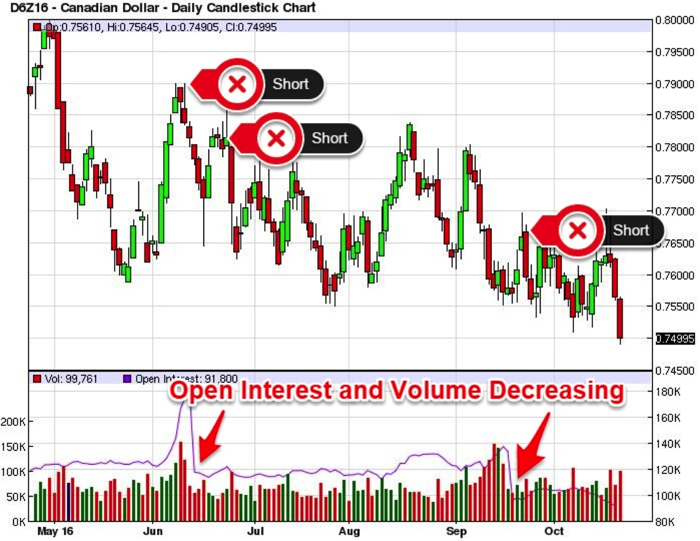
Compare Forex Brokers!
Compare top Forex brokers side-by-side and find the best fit for your trading needs. Start your comparison now!


Open interest is created when buyers and sellers make contracts, so when I take a long position, and you take a short position, we have created a contract and a commitment to the marketplace. Open interest is not updated in real-time number and is only updated at the close of each business day. Open interest, a non-cumulative number, is a count of how many contracts are open on the market.
Most traders are more aware of the trading volume and how volume works to sustain trends, but are not aware of open interest. With CFDs, open interest can fluctuate and change, which it can not for equities and shares.  When a trader sells a contract, they are always selling to a buyer. If you are that buyer, and you don’t have a position in this future contract, you can buy that contract from the sellers. When this transaction is complete, a new contract is created, as the seller created the new contract that was sold to you. When the new contract is created the total open contract volume will go up by 1, and the open interest will rise by 1 contract.
When a trader sells a contract, they are always selling to a buyer. If you are that buyer, and you don’t have a position in this future contract, you can buy that contract from the sellers. When this transaction is complete, a new contract is created, as the seller created the new contract that was sold to you. When the new contract is created the total open contract volume will go up by 1, and the open interest will rise by 1 contract.  If a trader buys a new contract from a seller who already owns a futures contract and is exiting their position, then the contract is owned by another party. This transfer of the contract ownership means the volume of open contracts will still rise by 1 contract. However, the open interest will not change because no new contract was created.
If a trader buys a new contract from a seller who already owns a futures contract and is exiting their position, then the contract is owned by another party. This transfer of the contract ownership means the volume of open contracts will still rise by 1 contract. However, the open interest will not change because no new contract was created.  If you’re looking to close out a previous contract from someone who already owns a futures contract, it means that both market participants are closing their position and open interest decreases by 1 contract.
If you’re looking to close out a previous contract from someone who already owns a futures contract, it means that both market participants are closing their position and open interest decreases by 1 contract.
Open interest should be used in the same manner as any other technical, seasonal or fundamental analytical theory. When used in conjunction with other timing indicators and sentiment measures, this might improve the overall odds of success. Drawing any conclusions from current open interest data is only possible within a historical context. Open interest is helpful in analysing trends to determine whether or not a trend is likely to continue. In bullish or bearish trends, four different possible situations can occur:
 In the above figure, we have the Canadian Dollar futures contracts chart, with some short trading opportunities are highlighted. There are two instances where both volume and open interest experienced a dramatic drop, signalling a massive selling of shorts coming into the market, and that the long-term trend is bearish. In this case, the right trading strategy would be to sell in every rally.
In the above figure, we have the Canadian Dollar futures contracts chart, with some short trading opportunities are highlighted. There are two instances where both volume and open interest experienced a dramatic drop, signalling a massive selling of shorts coming into the market, and that the long-term trend is bearish. In this case, the right trading strategy would be to sell in every rally.
Explore more resources that fellow traders find helpful! Check out these other guides to enhance your forex trading knowledge and skills. Whether you’re searching for the best brokers, educational material, or something more specific, we’ve got you covered.

